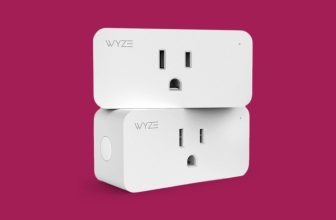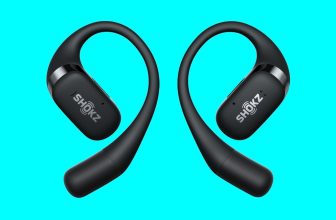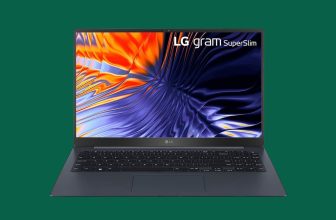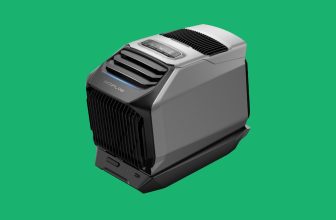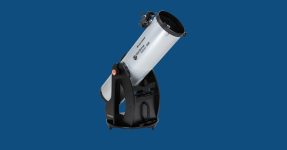
Celestron StarSense Dobsonian Telescope: Navigate the Stars
We reside in a time of abundance for the astronomy fanatic. There are dozens of apps designed that can assist you navigate the skies and discover good viewing places and climate home windows for optimum viewing. On high of all that, optics have by no means been cheaper, and integration between {hardware} and software program has by no means been higher.
Celestron’s new StarSense Dobsonian telescope is a superb instance of this. With a smartphone cradle on the scope, and a fastidiously calibrated app, you possibly can simply discover your manner round the night time sky even when you have no concept the right way to visually navigate the stars.
Dobsonian Design
I’ve beforehand examined and liked Celestron’s StarSense Explorer DX telescope (9/10, WIRED Recommends), which makes use of the similar smartphone app and cradle. The tech right here is each spectacular and easy, combining the energy of a star map in your cellphone with a mirror on the telescope to deal with the navigation for you. The Dobsonian mannequin is way bigger and extra highly effective.
A Dobsonian telescope is a Newtonian telescope, with what’s generally known as a two-axis altazimuth mount. The mount turns in a circle and likewise permits the scope to maneuver up and down. The mount factors assist the weight of a bigger mirror than you may get in different designs, and it places the stability level close to the backside of the scope, making it simple to maneuver. The result’s a giant, highly effective telescope that is not too heavy or tough to maneuver.
Celestron has launched two practically equivalent Dobsonian fashions. One is an 8-inch scope, and the different, which I examined, is a 10-inch scope. Aside from the dimension (which will increase the mild gathering energy), the design is equivalent. It’s necessary to understand that this can be a large telescope. Don’t let the phrases “10-inch” in the title idiot you—that solely refers to the aperture (diameter). Fully assembled, the 10-inch mannequin stands simply shy of 5 toes tall. The scope itself is 44 inches in size. It’s transportable as a result of it isn’t too heavy, however taking it wherever by automotive goes to require a good-sized automobile.
The StarSense arrived in two packages. The base is packed like a bit of IKEA furnishings, and one other large field incorporates the scope itself, which arrived totally assembled. All it’s a must to do is put collectively the base, which took about 20 minutes. This is a one-time course of. To transfer it round, there is a deal with for carrying (it is a bit cumbersome however manageable). And it’s pressboard, so it shouldn’t be saved outside.
The scope additionally has a deal with and is way lighter and straightforward to hold. It comes with mud covers to maintain your mirrors protected when transferring it round. The scope suits into the base and tightens down with two giant knobs. You then place the scope utilizing these knobs.
The StarSense additionally features a 25-mm Plössl eyepiece (although every other eyepiece you might need also needs to work), a 2-inch Crayford focuser, and a collimation device. If you get critical about star-watching, I might counsel getting a laser collimator. But if you do not know what collimation is, don’t fret. You need not use it to get nice views.
The final step in the preliminary setup is to connect the cellphone cradle mount and add the star-spotting scope, which is used primarily to calibrate the eyepiece (or should you plan to navigate manually). Once every thing is assembled, you must calibrate the eyepiece utilizing a set object a couple of quarter-mile away (I used a small constructing). Drop your cellphone in the holder, open the app, and it’ll stroll you thru the course of.
Navigation App
If you have by no means tried utilizing a telescope with out a good app, it is obscure the magnitude of what Celestron has achieved with its smartphone-enabled telescopes. The greatest I can say is that though I took two semesters of astronomy years in the past in school, I nonetheless discover utilizing a telescope difficult.
That’s why I like the Celestron StarSense system. I haven’t got to spend hours looking for stars for my children to take a look at. I simply pull up one thing in the app, observe the arrows till I’ve it in the eyepiece, fine-tune it with the crimson, orange, and inexperienced bull’s-eyes that allow you to know when you’ve gotten the object in view, and I’m achieved. The children look, and there are oohs and aahs. There’s none of the frustration and ready and shedding curiosity that might occur if I navigated by hand. Eliminating that overhead of studying the right way to use a telescope is a big win for getting newcomers—children or in any other case—considering astronomy. There remains to be a lot worth in studying the right way to use a telescope, however that may come down the highway after the preliminary curiosity is sparked.
Another good characteristic of the app is the description part, which provides particulars on no matter object you are , in addition to commentary recommendations. For instance, if you wish to see a star cluster, the StarSense will counsel a lower-power eyepiece so you possibly can see the entire cluster in a single view.



